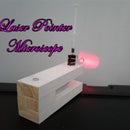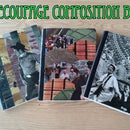Introduction: DIY Magnetic Welding Jigs
I'm an amateur welder. Very amateur. I bought a small Campbell Hausfeld buzz box a few years ago to do occasional small welding jobs around my shop. Since I'm not using it a lot or trying to make my living by welding, I don't like to spend a lot on welding tools. I saw the magnetic welding jigs at the welding supply shop and I decided to try to make my own.
It's all about the balance between work and play. The more money I can save on tools and supplies to do the things I want to do, the less time I have to spend doing things I don't want to do, i.e. work, to buy those things. If I can save $50-60 by making my own welding jigs, that's 3-4 hours I don't have to spend working, or more importantly, 3-4 more hours I can spend messing around at my workbench. A creative, DIY approach to life brings a lot of freedom!
Step 1: Cut the Wood
Magnetic welding jigs come in several varieties. The most common is the right angle/45 degree jig. They also come in common angles, such as 30, 45 and 60 degrees. The most useful and most expensive magnetic welding jig is adjustable to any angle. Magnetic jigs cost anywhere between $10 to a couple hundred bucks depending on strength and complexity. My welding jigs are free- made from scrap wood and magnets recovered from discarded hard drives.
I used a scrap of 2x4 lumber to make this jig. I determined the angle I wanted- in this case 90, 60 and 30 degrees. Since the 2x4 was already square on one angle, I adjusted my compound miter saw to 30 degrees and made a cut. This gave me a triangular block of wood with corners at the angles I needed.
Step 2: Attach the Magnets
Now it's time to attach the magnets. Hard drive magnets are great because they are super strong and they're mounted on steel plates with mounting holes. This means that they can be attached to many different surfaces in a variety of ways. Most hard drives have two magnets. One is mounted on a flat steel plate and the other one has a plate with bent 'ears' that protrude beyond the face of the magnet to hold them apart when they're installed in the drive. I used flat magnets from three different drives for this jig but the other magnets can also be used if you cut or grind off the ears. This will create a lot of metal shavings that will need to be removed from the magnet so it doesn't interfere with alignment later.
For this jig I'll be mounting the magnets to the three faces of my wood block with screws. I marked the position of the holes and then drilled pilot holes. I installed the magnets with sheet metal screws. Be very careful to choose screws with heads that won't protrude beyond the surface of the magnet as this will cause the metal you are holding to be misaligned.




